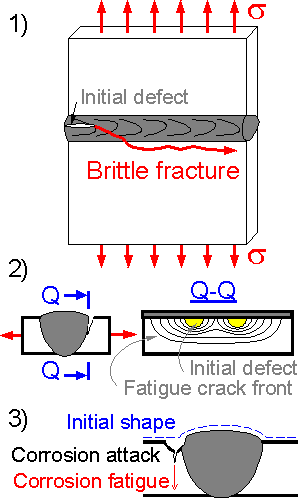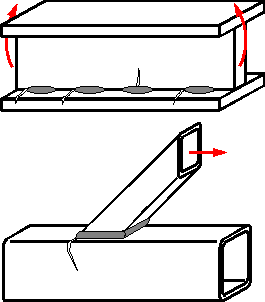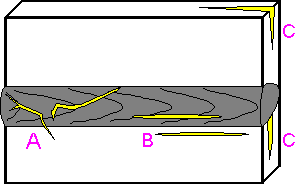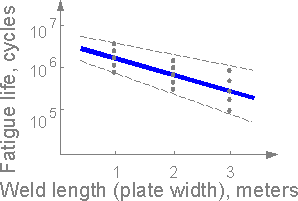 There are three basic fractures connected with welded structures:
There are three basic fractures connected with welded structures:
1) brittle fracture: fast crack propagated from a welding defect into a heat-affected zone, usually occurring within a second;
2) fatigue fracture: fatigue crack growing slowly from welding defects under cyclic loading;
3) corrosion fatigue: a crack propagated by joint action of corrosion (local embrittlement) and cyclic loading.

 For complex structures, the trajectory of a fatigue crack can be curved. A fatigue crack initiates from or tends to zones of maximum tensile stress. The strongest welded structures have the smallest concentration of welding defects and residual stress in the most highly loaded zones.
For complex structures, the trajectory of a fatigue crack can be curved. A fatigue crack initiates from or tends to zones of maximum tensile stress. The strongest welded structures have the smallest concentration of welding defects and residual stress in the most highly loaded zones.
 Some welding defects can be observed at the weld surface. Defects in welds have different geometry and location:
Some welding defects can be observed at the weld surface. Defects in welds have different geometry and location:
A. Hot cracks are usually curved and open.
B. Cold cracks are usually straight.
C. Lamellar cracks are perpendicular to the thick plate surface.
 Scale effect. For wider welds there is a higher probability of weld defects and fatigue cracks. Fatigue life decreases with weld size increase.
Scale effect. For wider welds there is a higher probability of weld defects and fatigue cracks. Fatigue life decreases with weld size increase.
 2015-08-13
2015-08-13 321
321








